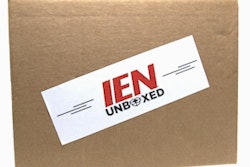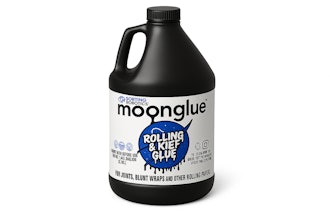
Creating and selling products is a complex process that demands meticulous planning, market research, and ongoing effort. A well-crafted product roadmap is essential for keeping strategies on track and guaranteeing that every aspect of the business aligns with organizational goals.
However, traditional tools often fall short, leaving Product Managers (PMs) struggling to communicate value propositions, track progress, and manage roadmaps effectively.
A new approach to roadmapping is needed—one that enhances collaboration, provides clear visuals, and simplifies the management of strategic timelines.
Let’s explore how this approach can revolutionize product roadmap management.
How High-Level Oversight Leads to Better Decision-Making
Making product decisions is complex, requiring accurate data, stakeholder input, and a clear vision of product goals. High-level oversight allows PMs to make informed decisions based on evidence rather than intuition.
With the right tools, PMs can customize which metrics to track and how to display them, ensuring they focus on the most pertinent information while minimizing distractions. A dynamic dashboard that adapts to different needs—whether for stakeholder meetings or internal reviews—empowers PMs to quickly pinpoint gaps and assess product progress.
This flexibility enhances strategic decision-making, helping PMs understand both the details of individual products and the bigger picture of the entire portfolio.
How to Communicate Effectively with Cross-Functional Presentations
Effective communication is key in any successful organization, especially in companies with complex product lines and multi-year roadmaps.
In such environments, even small communication blips can cause significant disruptions.
Ultimately, PMs are responsible for communicating across various levels, from team members to external partners and executives. With the right tools, communication can be streamlined, ensuring everyone stays informed and aligned.
PMs play a central role in facilitating product vision, managing stakeholders, and reporting to executives. However, traditional roadmapping tools can be unhelpful in tailoring presentations to different audiences. Most tools provide detailed charts and timelines that may overwhelm stakeholders, leading to confusion rather than understanding.
The best presentations have clarity and are customized for the right audience. For instance, when presenting to executives, a high-level view of progress may be more relevant, while the engineering team may require more detailed data about design and production timelines. Tailoring the content to the specific needs of the audience helps ensure clear and effective communication, making cross-functional presentations more successful.
How to Improve Stakeholder Collaboration
Product manufacturing teams require coordination across multiple stakeholders from different departments. These may include:
Research and Development
Engineering
Design
Finance
Project Managers
Manufacturing
Sales
Consumer Research
Marketing
Distribution
Executive Officers and Upper Management
Managing such a diverse group, potentially spread across different geographic locales, can present major roadblocks. As such, the right tools are needed.
Key ways to improve stakeholder collaboration include:
Centralized access: Everyone can access the same data in real-time, ensuring accurate, up-to-date information for all team members.
Version control: Eliminate confusion by having all stakeholders work from the same version of reports and documents, preventing errors caused by outdated or conflicting data.
Security settings: Guarantee only the right individuals have access to sensitive data, maintaining confidentiality and clarity.
Automated updates: Notifications of document changes allow teams to stay informed of any updates or edits, boosting transparency.
The right tools make it easier for all stakeholders to stay on the same, save time, and focus on achieving the product's goals.
Why Your Roadmap Needs to Include Long-Term Planning
Long-term planning is essential for physical products and industrial manufacturing, which require strategic foresight that extends years into the future. While short-term planning works for digital products with frequent release cycles, a multi-year roadmap is crucial for products with longer lifecycles.
Here are key reasons why long-term planning features are critical:
Supply Chain Shortages: If a material faces shortages due to external factors like environmental, economic, or political issues, long-term planning helps assess alternatives. For example, is it possible to replace one component with another or source new options? This foresight allows teams to evaluate how supply chain disruptions may affect product timelines, market share, and profit margins.
New Market Research: When R&D introduces a promising new product component, long-term planning tools allow PMs to project market share, profitability, and revenue. For instance, switching to a more sustainable material or enhancing product features (e.g., a longer-lasting battery) requires projections to understand the potential return on investment and market impact.
Limited Editions: Long-term planning helps decide whether making small changes, like offering a new color or limited edition, is worth the investment. It allows teams to analyze whether these modifications will improve customer satisfaction and boost revenue without disrupting the overall product strategy.
Taking a long-term approach to planning empowers teams to make informed decisions that align with both short-term goals—and the overarching vision for the product.
Industry Information & Use Case Examples
Product Roadmap Software enhances collaboration and decision-making across teams, helping them achieve product goals more efficiently.
Product Management Teams
Visualizes roadmaps with high-level and detailed dashboards to assess opportunities and track progress.
Simplifies collaboration, communication, and decision-making, aligning product plans with strategic vision.
Project Management Teams
Enables seamless communication with product managers to keep timelines on track and address feature changes or delays.
Engineers
Facilitates real-time communication with product managers, ensuring feature updates and product shifts align with the technical plan.
Customizable user profiles focus engineers on relevant metrics without distractions.
Designers
Helps designers collaborate with engineers, balancing customer needs with technical constraints to achieve the best product design.
Sales Teams
Provides access to product features, enabling sales teams to target the right customers and share valuable customer feedback for future product improvements.
Finance Teams
Tailors presentations and KPIs to meet financial goals, helping secure budget approval for new features or products.
Marketing Teams
Offers strategic insights to guide targeted marketing campaigns based on product vision and goals.
Executives
Customizable, high-level visualizations help executives monitor product progress, ensuring alignment with company goals and customer value.
The Right Functions for All Your Teams
Effective product roadmap software provides tailored tools for each department, aiding seamless collaboration toward common goals. With customizable dashboards and collaborative features, teams can stay aligned and communicate efficiently.
Whether you're in electronics, automotive, or any other manufacturing industry, this software helps streamline product management. Explore how product roadmap software can support your organization in achieving its business objectives.






















